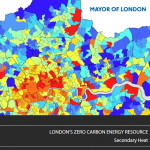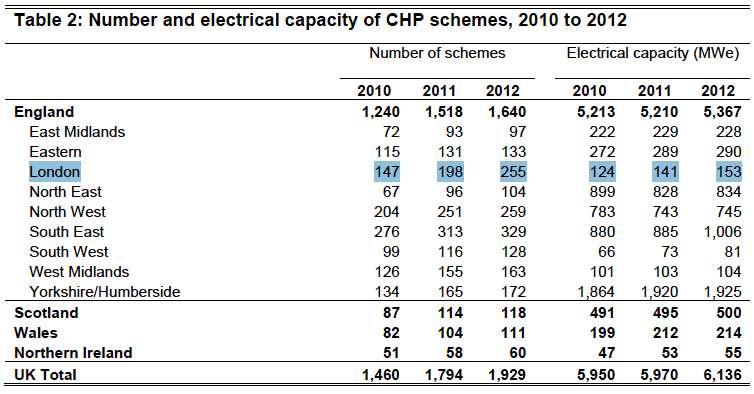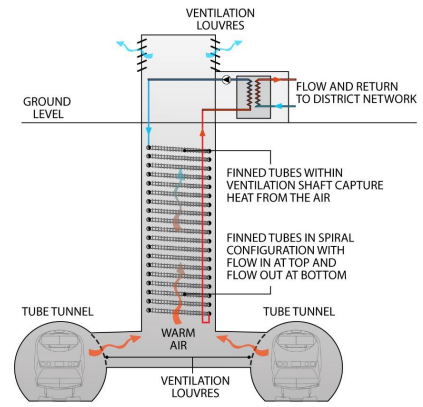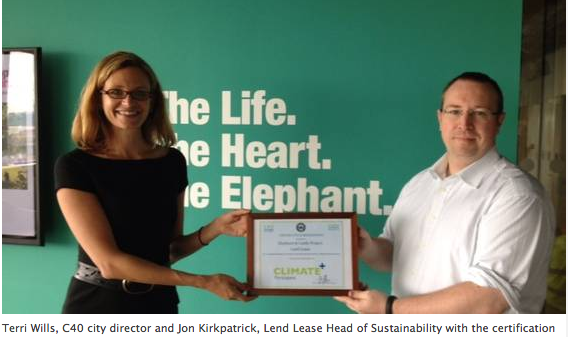Site search:
-
What’s new?
Energy for London Tags
Brent Buildings Camden Carbon Emissions CHP Cities Climate Adaptation Community Heating Community Initiatives Croydon Data DECC Decentralised Energy Distribution ECO Energy Costs Energy Efficiency Enfield FIT Fuel Poverty Funding Green Deal Hackney Haringey Housing Islington Lambeth Library Local Authorities Mayor Newham Ofgem Olympics Photovoltaics Planning RE:FIT RE:NEW Renewable Energy Retrofit Southwark Tower Hamlets Transport Waltham Forest Waste WestminsterEnergy Archives:
- February 2021 (1)
- January 2021 (15)
- December 2020 (15)
- November 2020 (9)
- October 2020 (3)
- August 2020 (5)
- July 2020 (3)
- June 2020 (4)
- April 2020 (10)
- March 2020 (5)
- February 2020 (2)
- January 2020 (3)
- October 2019 (1)
- September 2019 (4)
- August 2019 (2)
- July 2019 (1)
- August 2018 (1)
- November 2016 (8)
- October 2016 (8)
- September 2016 (2)
- August 2016 (8)
- July 2016 (14)
- April 2016 (12)
- March 2016 (16)
- February 2016 (8)
- January 2016 (4)
- December 2015 (1)
- November 2015 (1)
- October 2015 (16)
- September 2015 (3)
- June 2015 (1)
- May 2015 (1)
- April 2015 (1)
- March 2015 (1)
- February 2015 (1)
- January 2015 (1)
- December 2014 (18)
- November 2014 (4)
- August 2014 (8)
- July 2014 (7)
- June 2014 (25)
- May 2014 (8)
- April 2014 (4)
- March 2014 (12)
- February 2014 (7)
- January 2014 (13)
- December 2013 (11)
- November 2013 (15)
- October 2013 (15)
- September 2013 (18)
- August 2013 (5)
- July 2013 (20)
- June 2013 (33)
- May 2013 (8)
- April 2013 (16)
- March 2013 (25)
- February 2013 (14)
- January 2013 (20)
- December 2012 (23)
- November 2012 (23)
- October 2012 (25)
- September 2012 (14)
- July 2012 (12)
- June 2012 (43)
- May 2012 (20)
- April 2012 (8)
- March 2012 (40)
- February 2012 (39)
- January 2012 (40)
- December 2011 (22)
- November 2011 (40)
- October 2011 (33)
- September 2011 (48)
- August 2011 (40)
- July 2011 (58)
- June 2011 (41)
- May 2011 (80)
- April 2011 (38)
- March 2011 (33)
- February 2011 (25)
- January 2011 (24)
- December 2010 (3)
- November 2010 (7)
- October 2010 (6)
- September 2010 (7)
- August 2010 (1)
- July 2010 (2)
- June 2010 (4)
- May 2010 (1)
- March 2010 (3)
- February 2010 (3)
- December 2009 (5)
- November 2009 (2)
- October 2009 (3)
- July 2009 (3)
- June 2009 (1)
- April 2009 (1)
- March 2009 (1)
- February 2009 (1)
- January 2009 (1)
- December 2008 (2)
- October 2008 (1)
- September 2008 (1)
- July 2008 (1)
- March 2008 (2)
- January 2008 (2)
- October 2007 (1)
- September 2007 (3)
- July 2007 (1)
- March 2007 (1)
- February 2007 (3)
- November 2006 (3)
- August 2006 (1)
- February 2006 (1)
- May 2005 (1)
- February 2004 (1)
Tag Archives: Decentralised Energy
London’s District Heating Renaissance
December 2013: A run through some of the exciting decentralised energy developments currently being taken forward in London – as detailed by Energy for London – ahead of the major national Heat13 conference, which took place in London last week.
Posted in Decentralised Energy, News
Tagged CHP, Community Heating, Decentralised Energy
Leave a comment
Developing Heat Networks in London
November 2013: At the BRE’s recent event Developing heat networks in the UK three presentations were delivered on developments in London – links to which follow below:
Bunhill Heat and Power – Charlotte Large, Decentralised Energy Programme Manager, Islington Council
Identifying secondary heat sources for future sustainable heat networks – Peter North, Senior Manager – Programme Delivery (Sustainable Energy), GLA
The third presentation by Ian Smith, Head of Sustainable Services, Southwark Council, on London’s first energy from waste district heating network, can be found here.
Posted in Decentralised Energy, News
Tagged CHP, Community Heating, Decentralised Energy, Islington, SELCHP, Southwark, Waste
Leave a comment
Designing with data: shaping our future cities
 November 2013: A new report undertaken by ARUP for RIBA sets out that we are now at the “Dawn of a ‘smart era [where the] vast quantities of data we produce is set to revolutionise the way we design and build our cities”. A series of case studies are set out in ‘Designing with data: shaping our future cities‘ which includes the London Heat Map:
November 2013: A new report undertaken by ARUP for RIBA sets out that we are now at the “Dawn of a ‘smart era [where the] vast quantities of data we produce is set to revolutionise the way we design and build our cities”. A series of case studies are set out in ‘Designing with data: shaping our future cities‘ which includes the London Heat Map:
“One of the key benefits of adopting a smart approach to data is the ability to see lots of datasets in context with each other, and to detect temporal and spatial patterns. This transparency saves time and cost by reducing the time needed to find and process key data. The London Heat Map is a case in point. The interactive tool developed by the Greater London Authority (GLA) allows people to identify opportunities for Decentralised Energy projects in London, such as Combined Heat and Power (CHP) or district heating networks. Public organisations, property developers, social landlords or investors can also use it to view spatial information that can help them identify and develop Distributed Energy opportunities, such as data on: major energy consumers, fuel consumption and carbon emissions,energy supply plants, community heating networks,and heat density. The London Heat Map will evolve overtime alongside the Decentralised Energy for London programme and become more useful and sophisticated as boroughs and other stakeholders start inputting more energy data into the map.”
The report goes on to quote Alan Shingler, Partner, Head of Sustainability, Sheppard Robson who states “smart data could help test the impact of likely building fabric improvements through the Government’s Green Deal or regeneration schemes, to show how the GLA’s Heat Map would adjust to these variables. The data could also be used to model the impact of new renewable energy generation and future development on the map. This would enable the creation of a resilient low carbon transition plan for London that would take into account a range of considerations….where Combined Heat and Power (CHP) is proposed, heat could be more freely shared with neighbouring residential developments, schools, or public buildings with a relatively high heat load.“
Three recommendations are made in the report including one Energy for London strongly supports which is the greater ‘Digitisation the of the planning process’ where “Government should scope how it can standardise the digitisation of all information submitted for planning, and of standardising design data collection across local authorities. This public data should be open to unleash economic growth; and local authorities should be encouraged to use open data to inform local planning strategies.”
Posted in Decentralised Energy, News
Tagged Decentralised Energy, Heat Maps, London Heat Map, Planning
Leave a comment
Rundown on CHP in London
October 2013: Two recent sources issued by DECC provide data on the use uf Combined Heat and Power (CHP) plant in London. A useful article in DECC’s latest issue of Energy Trends provides a breakdown of CHP use in the regions, providing number of schemes, output, capacity installed and much more. Table 2 from the article is reproduced below.
The data shows a significant increase in the number of CHP schemes operating in London over the past two years (147 – 255) – a 73% jump – whilst generation capacity has grown by 29MW, reflecting the typically smaller scale nature (ie <1MWe) of CHP engines being installed in the capital. Of concern however is that Table 2B (below) from the article reveals that, though the capacity level of CHP has increased – the key metric – the output of decentralised lower-carbon heat and power in London – has actually fallen over the past two years. CHP electricity generation has fallen by 1% and heat generation by 2% in 2012 as compared to 2010 numbers. More promisingly however, the statistics indicate that the 2012 levels show a recovery a far steeper decline in output over the period 2010 to 2011 – so hopefully CHP is now ‘on the up’… Continue reading…
London’s secondary heat resource
October 2013: The GLA commissioned a detailed report earlier this year exploring opportunities in London to use high volumes of typically lower-temperature waste heat. Further details on this study – London’s Zero Carbon Energy Resource – can be downloaded here. And a recent presentation made at BRE’s ‘Developing heat networks in the UK ‘ also provides a good summary of some of the findings.
Heat is generated in London’s tube network as a result of trains braking, underground lighting and from passengers. This heat is rejected through ventilated shafts at strategic positions along the network at temperatures ranging typically from 12-29 degrees.
Most secondary heat sources need upgrading to higher temperatures to be useable in heat networks – this requires heat pumps. The minimum suitable temperatures for district heating is 55 degrees. Download the presentation ‘Secondary Heat – London’s Zero Carbon Energy Resource‘ here.
London’s ‘first EfW DH network’
October 2013: A presentation made at BRE’s recent ‘Developing heat networks in the UK ‘ provides a little background – and a few images – behind the new Southwark district energy network taking waste heat from the SELCHP energy from waste (EfW) plant and directing to five nearby housing estates -presentation here (and directly here). Further information on the following post here.
Posted in Decentralised Energy, News
Tagged Community Heating, Decentralised Energy, SELCHP, Southwark
Leave a comment
Elephant & Castle plans to be ‘Climate Positive’
October 2013: London SE1 community website recently reported that “Lend Lease’s Elephant & Castle programme has been formally recognised by C40 Cities Climate Leadership to become the third project of 18 globally to reach ‘participant’ status.
The ‘climate positive participant’ rating is conferred by sustainability experts acting on behalf of C40’s Climate Positive Development Programme in partnership with the Clinton Climate Initiative.
To achieve this status, Elephant & Castle developers have submitted a roadmap which demonstrates that the scheme is set to be climate positive by 2020.”
Further information on the Elephant and Castle regeneration website states construction started last month on “the first 500 new homes …[which] will be some of the most sustainable, energy efficient and occupier-friendly places to live in Britain.” Amongst the ‘green’ initiatives to be incorporated in to what is one of the largest regeneration sites in Europe will be an ” on-site combined heat and energy centre [which] will not only provide heat and power to the homes and shops, it will also act as an interactive community and educational centre for the public.”
Some further background to this scheme and its carbon-reduction plans can be read in an earlier post here.
Posted in Decentralised Energy, News
Tagged CHP, Community Heating, Decentralised Energy, Planning, Southwark
Leave a comment
“The Rise of Distributed Generation”
October 2013: PWC’s latest annual energy and utilities survey – ‘Energy Transformation: The impact on the power sector business model‘ is proving quite a stir as a result of its findings on the future of the electricity generation sector. An incredible “82% see distributed power generation as ‘an opportunity’ versus only 18% rating it as a ‘threat’.”
The Executive Summary sets out that “The growth of distributed generation and its threat to the power utility business model depends on technological developments and cost. Its rise in Europe has been subsidy-driven. Cost barriers remain in the way of it being truly market-driven. But, if these barriers can be overcome, they could set the scene for widespread global industry transformation. Many believe that point is within reach. Energy efficiency, falling solar prices, demand-side management and smart grid technology head the list of technological developments that the industry believes will have the biggest impact on their power markets.“
“At the moment we are beginning to come to the end of a phase where the spread of distributed generation has been policy and subsidy-led. With the economics of distributed generation fast changing, we are likely to move into a phase where take-up is commercially and market-led.” [p17]
The growth of smaller scale, localised distributed – or decentralised – energy generation technologies is critical in helping cities such as London determine their own energy future. Many of the larger scale centralised generation plant currently in operation reflected the opportunities that were available at the time: coal power stations were sited near coal-seams; the 1990s ‘dash for gas’ led to a dramatic increase of new ‘Combined Cycle Gas Turbine’ (CCGT) plants, often situated close to gas terminals. Increasingly, smaller, cleaner energy systems, from PV to CHP, heat pumps to district heating schemes, are becoming technologies of choice: importantly they are sited at the place of demand – where consumers actually need to use power and heat. It’s therefore good to see such significant support for this dramatic change in this timely and important analysis.
New VNEB District Heating Feasibility Study released
September 2013: Building on the November 2012 Vauxhall Nine Elms Battersea (VNEB) Energy Masterplan (7.8MB) (also see a previous post here on the earlier Opportunity Area Planning Framework for VNEB), a more detailed District Heating Feasibility Study has now been prepared for Wandsworth borough council and has been published online on the London Heat Map website.
The Nov 2012 study set out that the “Vauxhall Nine Elms Battersea Opportunity Area (VNEB OA) includes some of the highest density, large-scale development anywhere in London. As such, it offers huge potential for the development of a coherent, low carbon energy supply system.”
Key recommendations at the time included:
- To implement kick-start networks based around early loads in three locations, with routes identified as i. Lambeth ii. Central iii Battersea
- To continue dialogue with the new US Embassy development to show that a district energy network could be developed with benefits for the area and the Embassy.
- To open discussions to reinstate the hydraulic link to the Pimlico District Heating Undertaking Energy Centre – this is referring to a tunnel under the Thames which originally supplied waste heat from Battersea Power Station to the Pimlico District Heating system on the north side of the river (see more on this here and here).
Building on this the new 2013 District Heating Feasibility Study seeks to demonstrate the “commercial case both for individual developers and a centralised operator of a district heating network” examining opportunities for two potential heat network options “the developers’ non-networked approach (as expressed in individual site energy strategy documents)… Heat prices are then set to offer a fixed level of whole life cost benefit to developers connecting to the system. Second, the economic performance of heat delivery for the central scheme operator is demonstrated based on the heat prices identified from the developer perspective.”
Phasing of the build-out of the networks is considered alongwith an investment analysis of the different network options. Key to the recommendations sets out on page of the report is identifying a “project champion’ within the delivery vehicle to provide impetus and encouragement to the private sector to participate in the scheme”.
Posted in Decentralised Energy, Library, News
Tagged CHP, Community Heating, Decentralised Energy, Lambeth, Wandsworth
Leave a comment
London’s Zero Carbon Energy Resource
 September 2013: Detailed GLA-commissioned study looking at “two particular categories of heat, both of which can be termed ‘secondary sources’: waste heat arising as a by-product of industrial and commercial activities; and the heat that exists naturally within the environment (air, ground, water).”
September 2013: Detailed GLA-commissioned study looking at “two particular categories of heat, both of which can be termed ‘secondary sources’: waste heat arising as a by-product of industrial and commercial activities; and the heat that exists naturally within the environment (air, ground, water).”
Details of the full report here (direct links below) the findings of which include:
- For most secondary heat sources, their temperature is too low for direct use. It is therefore necessary to ‘upgrade’ them to a useful temperature using heat pumps. Heat pump efficiency is important for secondary heat source utilisation as it affects the cost and carbon intensity of the heat delivered and will impact London’s electrical infrastructure.
- Analysis shows that by using heat pumps to deliver heat at 70°C, the total heat that could be delivered from secondary sources in London is of the order of 71 TWh/yr which is more than the city’s total estimated heat demand of 66 TWh/yr in 2010.
- The proportion of London’s heating demand that could be met by district heating networks operating at 70°C could rise to 30 TWh/yr by 2050, assuming ambitious retrofit programmes were implemented over that period.
Secondary Heat Study – Summary Report
Secondary Heat Study – Phase 1
Secondary Heat Study – Phase 2
Datasets for the study are available on the London Datastore
Posted in Decentralised Energy, Library, News
Tagged Community Heating, Decentralised Energy
Leave a comment
Latest review of implementation of London Plan energy policies
September 2013: The GLA have recently produced their latest update on how the energy and climate policies in London’s spatial planning strategy – the London Plan – have helped drive forward the development of lower carbon buildings in the capital. The new 2013 report – along with previous years studies – can be downloaded here. An earlier post here provides some details on these reports.
The study ‘Energy Planning: Monitoring the implementation of London Plan energy policies in 2012‘ provides an analysis of the energy assessments relating to all finalised (stage II) planning applications determined from 1 January to 31 December 2012. As the Executive Summary of the report sets out “London planning authorities must consult the Mayor on all planning applications that are of strategic importance to London . For each planning application referable to the Mayor, an energy assessment is required setting out how the development will meet the London Plan energy policies. Following the order of the Mayor’s energy hierarchy, each energy assessment is required to set out how the development will:
- Use less energy
- Supply energy efficiently
- Use renewable energy”
The analysis highlights how the London Plan’s policies are making significant headway in helping drive forward the development of more energy efficient, climate-friendly buildings in London. Some of the findings include:
- High levels of energy demand reduction achieved with developments exceeding the requirements of Building Regulations through energy efficiency alone. The associated investment of circa £32 million will help to reduce consumers’ energy bills.
- Circa £20 million of investment in new, high efficiency combined heat and power (CHP) plant able to produce 29MW of electricity and a similar amount of heat.
- 74MW of cumulative CHP electrical capacity has been secured through the planning process since 2010 to the end of 2012, broadly equivalent to the capacity required to supply 150,000 homes.
- Circa £133 million of investment in heat network infrastructure for approximately 53,000 communally heated dwellings
- Continued investment in on-site renewable energy systems, including approximately £16 million to provide circa 87,000m2 of photovoltaic solar panels.
Posted in Library, News
Tagged Buildings, CHP, Community Heating, Decentralised Energy, Energy Efficiency, Photovoltaics, Planning, Renewable Energy
Leave a comment
Sutton respond to ‘Local Energy’ Inquiry
August 2013: The London Borough of Sutton has recently submitted evidence to the House of Commons Energy and Climate Change Committee’s inquiry into ‘Local Energy. A number of interesting points are made in the borough’s submission, including:
- In terms of determining the level of appetite among local authorities to invest in their own medium-scale energy projects, Sutton respond that the number of local authorities have taken a key role in developing their own energy projects demonstrating that a desire for such projects exist
- Sutton has been progressing its own decentralised energy network over the last 12-15 months and there is a political desire to support this work
- Sutton has realised that it can address a number of its policies through taking a vested interest in this work such as addressing fuel poverty, controlling infrastructure spend in the Borough, improving security of supply as well as attracting residents and business to the area.
- Local government needs a much better understanding of project management and risk mitigation alongside a realisation that a Council has to be highly entrepreneurial in its approach to delivering public policy and services
The Energy and Climate Change Committee will publish its findings into its Local Energy inquiry tomorrow morning. See here for information.




